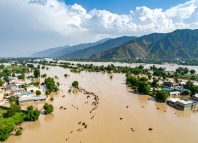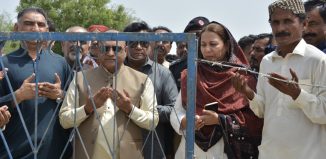Climate change is increasing the frequency and severity of certain types of hazard events in many parts of the world, particularly in Asia. Gradual climatic changes are also likely to have a significant impact on people’s vulnerability. People have always adapted their livelihoods and ways of living to climate variability. However, changes in variability are putting pressure on many Asian vulnerable communities’ capacity to adapt, cope and respond, as well as increasing their exposure to weather-related risks. Climate change is also indirectly affecting people by influencing prices in crop and livestock markets (at global and more local scales), triggering environmental and economic migration and potentially creating conflicts over natural resources.
At Community World Service Asia we are working on ways of integrating Disaster Risk Reduction with climate change adaptation (CCA), as well as mainstreaming both into development. Development, DRR and CCA are interdependent and mutually reinforcing areas of our policy, strategy and action.
In most of our work, DRR and CCA are overlapping and involve similar kinds of intervention that aim to reduce the impacts of shocks by anticipating risks and addressing vulnerabilities. In practice, our Resilience building and Climate Action interventions range from supporting long-term sustainable development and vulnerability reduction to more specific measures to help societies adapt to, protect against, prepare for and respond to risks and hazards. This includes adapting development practices to long-term environmental stresses, as well as reducing or managing the risks associated with more frequent, severe and unpredictable weather events.
Through our DRR and Climate Action projects, we aim to make communities more resilient by seeking to strengthen their capacities to cope with a wide range of threats, both anticipated and unforeseen.
Our approach puts people and communities at the center. We believe that the starting point in managing risks and building long-term community resilience is an understanding of exposure and sensitivity to a given set of local impacts. This involves assessing past and potential climate change impacts, natural systems, and processes and how human settlements interact with them; understanding infrastructure and services; and addressing public health issues within a community.
By understanding who is most likely to suffer from climate change hazards, and the processes through which vulnerability is produced and reinforced, together with at risk communities we can design more effective mitigation and adaptation measures using a wider range of planning tools and policies. We believe in adopting an approach that emphasizes an understanding of vulnerability to help guide the allocation of resources towards measures that will have the greatest positive impact on reducing the risk of low-income communities.
Home Climate Action & Risk Reduction
Climate Action & Risk Reduction
As part of our integrated DRR and WASH project in Umerkot, newly constructed water supply schemes were officially inaugurated and handed over...
Last year, we traveled to the Thar region of Umerkot to document the transformative impact of...
This comprehensive infographic outlines the impact of climate change in the region and our vision and strategic approaches to addressing climate change...














